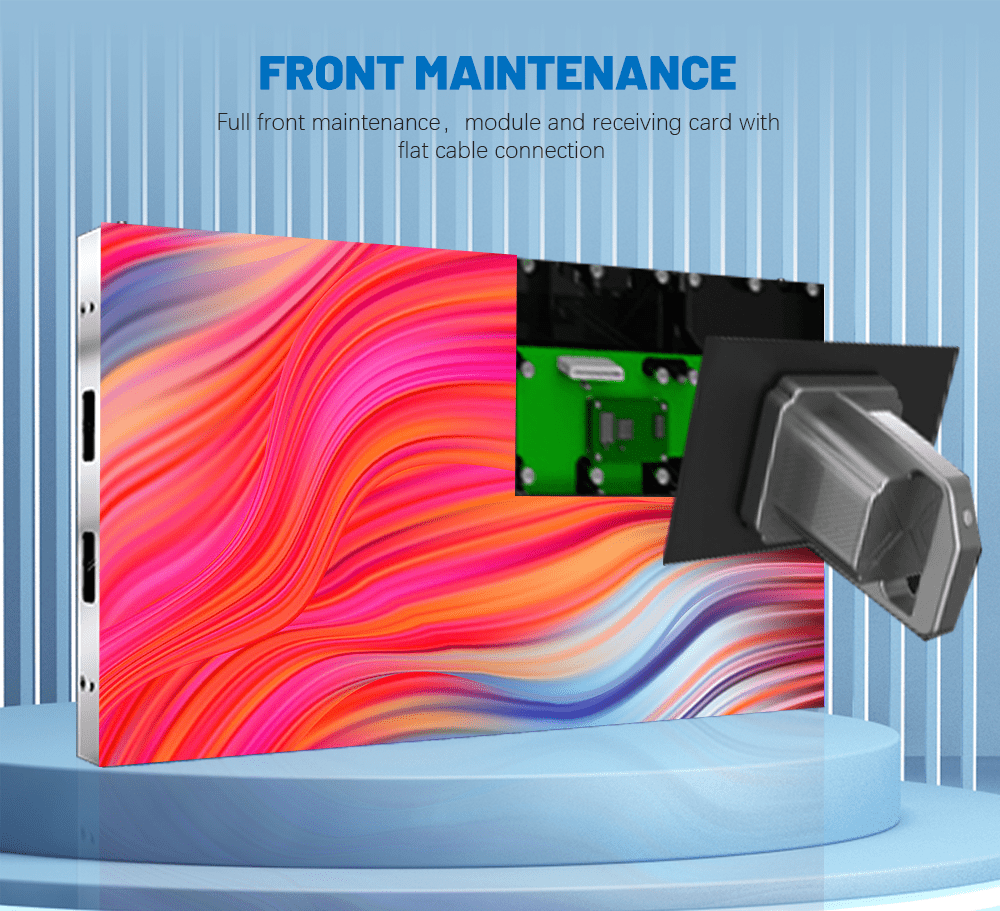With the advancement of LED display technology, the spacing between points is becoming smaller and smaller. In the field of large screen display in 2017, small pitch LED products have become a well-deserved star product, and their market application range is rapidly expanding. According to industry consensus, LED displays with dot pitch below 2.5mm are called small pitch LED displays. Usually, small pitch LED display screens are chosen, which can be considered from the following aspects:

During the selection and use of small pitch LED display screens, attention should be paid to the following aspects:
1. The filling coefficient should be high
The fill factor of LED display screens, also known as the bright area ratio, is the ratio of the luminous area of each pixel to the physical surface area occupied by that pixel. LED display screens are arranged by discrete pixels, with obvious non luminous black areas between them. When viewed at close range, the image is discontinuous and incomplete, and uneven brightness creates a graininess. If the light source is limited to a very small pixel surface area, resulting in a single pixel brightness several times or even more than ten times the brightness of the entire screen, it will cause a more serious glare. The recognized TCO’99 standard in the flat panel display industry stipulates that the fill factor should not be less than 50%. Currently, many LED displays in the market do not meet this indicator in terms of fill factor. The cutoff characteristics of the low-pass filter in television also directly affect the appropriate shooting distance of LED displays with different fill coefficients.
2. Color temperature can be adjusted
ColorTemperature is the temperature determined by comparing the emission spectrum shape of the emitter with the best fit blackbody emission spectrum shape. When an LED display screen is used as the background in the studio, its color temperature should be consistent with the color temperature of the indoor lighting in order to obtain accurate color reproduction during shooting. The lighting in the studio may use 3200K low color temperature lamps or 5600K high color temperature lamps according to program requirements. The LED display screen needs to be adjusted to the corresponding color temperature to achieve satisfactory shooting results.
3. The shooting distance should be appropriate
As mentioned in the previous discussion on the spacing and filling coefficient, the appropriate shooting distance for LED displays with different point spacing and filling coefficient is different. The distance between the captured characters and the screen is 4-10 meters, which is more suitable, so that when shooting characters, you can get a better background picture. If the character is too close to the screen, the background will appear grainy and prone to mesh interference when shooting close ups.
4. Ensure a good usage environment
The failure rate of a product is only low during its service life under suitable working conditions. As an integrated electronic product, LED display screens are mainly composed of control boards equipped with electronic components, switching power supplies, light emitting devices, etc. The lifespan and stability of all these components are closely related to the working temperature.
